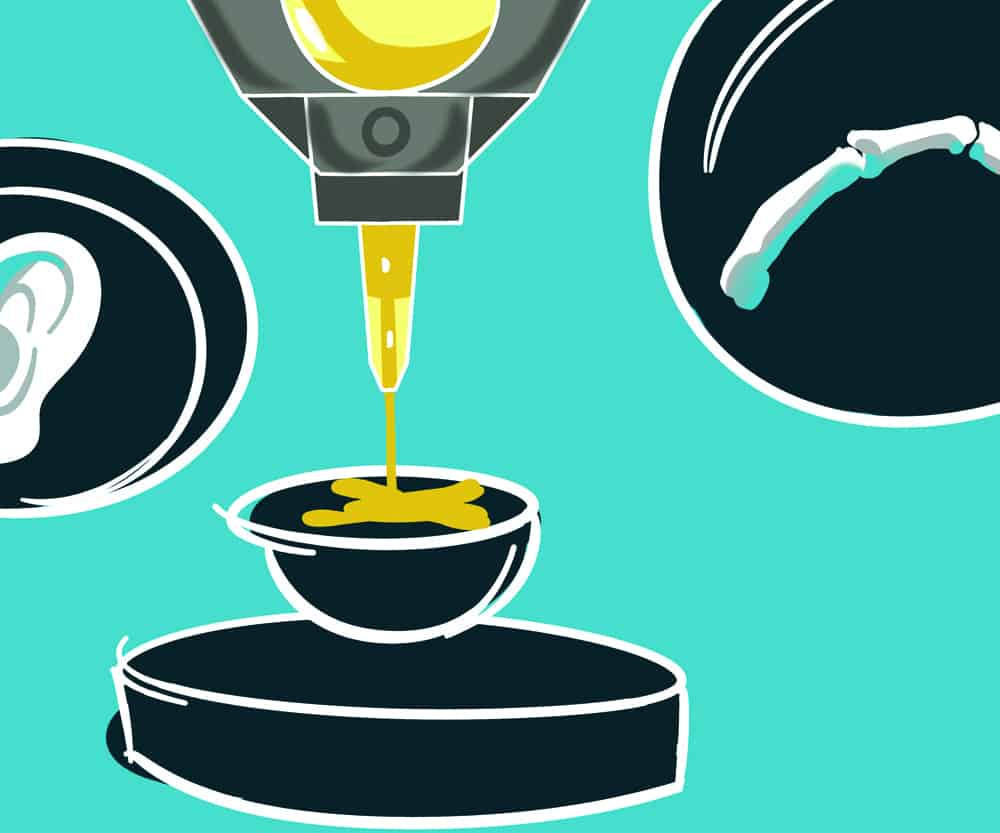A revolution brought about by the advent of 3-D printing technology is beginning to emerge on the horizon. A brief excursion into the current state of affairs shows the countless ways in which 3D printers may have a revolutionary impact on our society. Through a clinical, industrial, or military lense, the 3-D printer has the potential to become a primary technology of the future. Two of the most transformative effects of this phenomenon, at least in my opinion, will be in the fields of medicine and industrial mass-production; in the former, a radical paradigm shift in the field of organ transplantation, and in the latter, a democratization of production.

NANCY JI/THE VARSITY
Today, owing to the marvels of marrying tissue engineering and 3-D printing technology, we are able to construct skulls, kidneys, and even skin. Bone printing is in the works as well. The mere possibility of a world in which an ill person in need of a new organ wouldn’t have to worry about the availability of a suitable donor or the probability of a transplant rejection is fascinating. For instance, perfecting a 3-D-printed human kidney could drastically reduce the mortality rates associated with kidney failure. In addition, we can envisage a future in which cardiovascular disease is no longer a leading cause of death — provided, of course, that the field invests time and resources in engineering and perfecting a 3-D-printed human heart.
Kevin Shakesheff, a professor of advanced drug delivery and tissue engineering at the University of Nottingham, reports: “I’m optimistic that people 100 years in the future will look back and see that now was when all those human structures started being created. If we work hard, and we’re lucky we could be transforming transplants so you never have to wait for a donation again.”
Interestingly, one of the major challenges this field faces is not technological, but biological. Human organs exhibit a very distinct, biological complexity. Think of your liver, the powerhouse of a plethora of metabolic functions — can we mimic such biological complexity, with its state-of-the-art regulatory mechanisms? Put another way, can we reconstruct the ever-changing, dynamic character of such an organ? Let’s imagine that
we can. What’s next?
According to Carlo Quinonez, a research scientist at Autodesk, another major challenge deals with the very insertion of the 3-D-printed organ. As the reconstructed organ will also be biologically alive and constantly changing (exactly like the blueprint organ from which it was derived), doctors might have only one chance to transplant it into the patient.
Working with a team of interdisciplinary experts, professor Shakesheff’s current project aims at constructing a 3-D-printed liver. While the project is still in its infancy, and will undoubtedly face many difficulties along the way, it highlights a new orientation in medical research. This project, among others, has the potential to rise as a tour de force in the field of organ transplantation.
Just like prosthetic arms, bionic eyes, or Google Glass, 3-D-printed organs also raise various ethical concerns. Who will have access to the benefits if they are ever perfected? Will their production be privatized; will they be a luxury only the elite can afford? Will such feats of bioengineering exacerbate the existing gap between the rich and the poor? Indeed, the questions are almost as endless as the possibilities.
Omar Al Bitar studies neuroscience and sociology.


